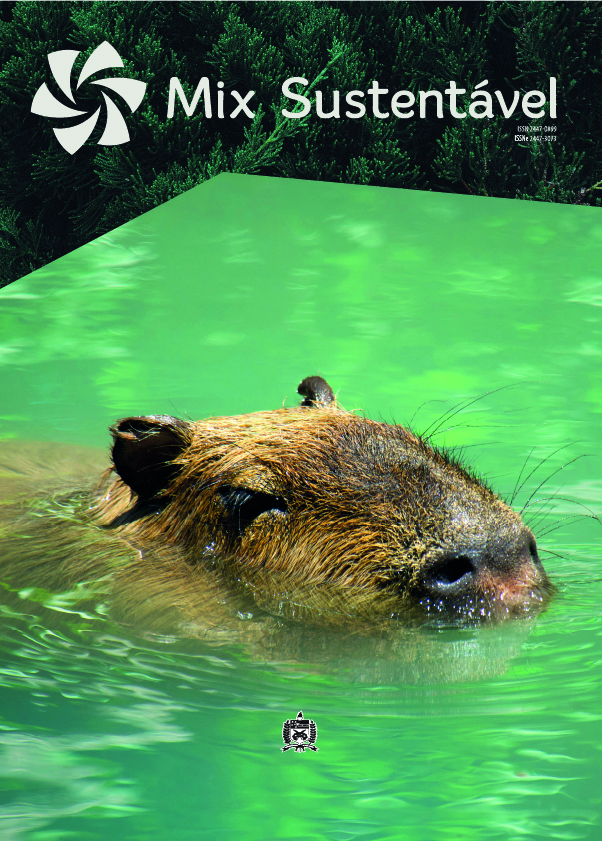FABRICACIÓN ADITIVA Y RECICLAJE DISTRIBUIDO: LOS RESIDUOS COMO MATERIA PRIMA EN EL DISEÑO Y FABRICACIÓN DE OBJETOS UTILITARIOS
ADDITIVE MANUFACTURING AND DISTRIBUTED RECYCLING: WASTE AS RAW MATERIAL IN THE DESIGN AND MANUFACTURE OF UTILITARIAN OBJECTS
DOI:
https://doi.org/10.29183/2447-3073.MIX2024.v10.n1.51-61Palabras clave:
Fabricación aditiva, Reciclaje, Diseño, Diseño para fabricación aditiva, SostenibilidadResumen
Las primeras décadas del siglo XXI fueron testigo de dos grandes acontecimientos: la inserción de China en el mercado mundial de suministros y la popularización de Internet. Los más diversos segmentos de la industria se vieron afectados por una avalancha de ofertas y precios a la baja de nuevas máquinas y productos, entre ellos las tecnologías de fabricación aditiva. Esta tecnología permite la producción a menor escala y a valores más bajos que los métodos tradicionales de producción de artefactos. Esta conexión, combinada con la reutilización de residuos de la producción local, puede revolucionar las cadenas de suministro y la circularidad en el desarrollo y distribución de objetos. Este trabajo demuestra el desarrollo de un sistema de fabricación aditiva alineado al reciclaje distribuido considerando sus impactos, ventajas, desventajas y posibilidades de aplicación en el escenario brasileño, en términos de sostenibilidad y circularidad de los procesos.
Citas
ANDERSON, C., (2013). Makers: The New Industrial Revolution. Random House Business, London.
MCDONOUGH, B., BRAUNGART, M. 2002, Cradle to Cradle: Remaking the Way We Make Things. ISBN-10: 0865475873.North Point Press. USA
BAUMERS, M., TUCK, C., BOURELL, D.L., SREENIVASAN, R., HAGUE, R. (2011). Sustainability of additive manufacturing: measuring the energy consumption of the laser sintering process. Proceedings of the Institution of Mechanical Engineers, Part B: Journal of Engineering Manufacture, 225(12), 2228–2239.
BAUMERS, M., TUCK, C., WILDMAN, R., ASHCROFT, I., ROSAMOND, E., HAGUE, R. (2013). Transparency Built in. Journal of Industrial Ecology, 17(3), 418–431.
BIRTCHNELL, T., & HOYLE, W. (2014). 3D Printing for Development in the Global South: The 3D4D Challenge. Basingstoke: Palgrave Macmillan.
BOGERS, M., HADAR, R., BILBERG. A. (2016). Additive manufacturing for consumer-centric business models: Implications for supply chains in consumer goods manufacturing. Technological Forecasting & Social Change, 102, 225–239.
BYARD, D. J., WOERN, A. L., OAKLEY, R. B., FIEDLER, M. J., SNABES, S. L., & PEARCE, J. M. (2019). Green Fab Lab Applications of Large-Area Waste Polymer-based Additive Manufacturing. Additive Manufacturing, 27, pp. 515-525.
CHANDLER, A.D. (1990). Scale and Scope: The Dynamics of Industrial Capitalism. Cambridge MA: Harvard University Press.
CHAVES, Luís de Gonzaga Mendes, (1971). Minorias e seu estudo no Brasil. Revista de Ciências Sociais, Fortaleza, v. 1, n. 1, p. 149-168
CHEN, D., HEYER, S., IBBOTSON, S., SALONITIS, K., STEINGRÍMSSON, J.G., Thiede, S., (2015). Direct Digital Manufacturing: Definition, Evolution, and Sustainability Implications. Journal of Cleaner Production, 107, 615–625.
DALSGAARD, Peter; HALSKOV, Kim. Reflective design documentation. In: Proceedings of the Designing Interactive Systems Conference. 2012. p. 428-437.
DESPEISSE, M., BAUMERS, M., BROWN, P., CHARNLEY, F., FORD, S. J., GARMULEWICZ, A., ROWLEY, J. (2016). Unlocking value for a circular economy through 3D printing: a research agenda. Technological Forecasting & Social Change, p. 49.
DOS SANTOS, J., BRANCAGLION JUNIOR, A., WERNER JUNIOR, H., & AZEVEDO, S. (2013). Tecnologias 3d: desvendando o passado e modelando o futuro [3d Technologies: unraveling the past and shaping the future]. Brazil: lexikon editora digital.
DOS SANTOS, J., WERNER JUNIOR, H., AZEVEDO, S., & BRANCAGLION JUNIOR, A. (2019). Seen / Unseen. Brazil: rio books.
DOS SANTOS, J. R., CORREIA DE MELO, J. V., FRAJHOF, L., & KAUFFMANN, A. R. (December de 2020). Confronting COVID-19 - The case of PPE and Medical Devices production using Digital Fabrication at PUC-Rio. SDRJ - Strategic Design Journal, p. 14.
GRAEDEL, T.E., Allenby, B.R., (2002). Industrial ecology. Prentice Hall, Englewood Cliffs, NJ, USA.
GUSMÃO, G. (2004). “Rua dos Inventos”, Invention street. A arte da sobrevivência • The art of survival. Rio de Janeiro: IBM.
ILLICH, I. (1976). A Convivencialidade. Lisboa: Publicações Europa-América.
LEARY, M. (2020). Chapter 3 - Digital design for AM. Em M. LEARY, Additive Manufacturing Materials and Technologies: Design for Additive Manufacturing (pp. 33-90). Oxford: Eselvier.
LOVINS, A.B. (1996). Negawatts: Twelve transitions, eight improvements and one distraction. Energy Policy,24(4), 331–343.
KOHTALA, C., HYYSALO, S., (2015). Anticipated environmental sustainability of personal fabrication. Journal of Cleaner Production, 99, 333–344.
KREIGER, M., ANZALONE, G., MULDER, M., GLOVER, A., & PEARCE, J. (27 de Fevereiro de 2013). Distributed Recycling of Post-Consumer Plastic Waste in Rural Areas. MRS Online Proceedings Library, 1492, 101-106.
PETERSEN, E., & PEARCE, J. (2017). Emergence of Home Manufacturing in the Developed World: Return on Investment for Open-Source 3-D Printers. (MDPI, Ed.) Technologies, 5(7), p. 15. doi:10.3390/technologies5010007
TANG, Y., & ZHAO, Y. (18 de Abril de 2016). A survey of the design methods for additive manufacturing to improve functional performance. Rapid Prototyping Journal, p. 21.
ZIMMERMAN, J., Forlizzi, J., & Evenson, S. (2007). Research through design as a method for interaction design research in HCI. Proceedings of the SIGCHI conference on Human factors in computing systems, 493-502.
Descargas
Publicado
Cómo citar
Número
Sección
Licencia
Derechos de autor 2023 João Victor Correia de Melo

Esta obra está bajo una licencia internacional Creative Commons Atribución 4.0.
Aviso de Direito Autoral Creative Commons
1. Política para Periódicos de Acesso Livre
Autores que publicam nesta revista concordam com os seguintes termos:
a. Autores mantém os direitos autorais e concedem à revista o direito de primeira publicação, com o trabalho simultaneamente licenciado sob a Licença Creative Commons Attribution que permite o compartilhamento do trabalho com reconhecimento da autoria e publicação inicial nesta revista.
b. Autores têm autorização para assumir contratos adicionais separadamente, para distribuição não-exclusiva da versão do trabalho publicada nesta revista (ex.: publicar em repositório institucional ou como capítulo de livro), com reconhecimento de autoria e publicação inicial nesta revista.
c. Autores têm permissão e são estimulados a publicar e distribuir seu trabalho online (ex.: em repositórios institucionais ou na sua página pessoal) a qualquer ponto após o processo editorial, já que isso pode gerar alterações produtivas, bem como aumentar o impacto e a citação do trabalho publicado (Veja O Efeito do Acesso Livre).




